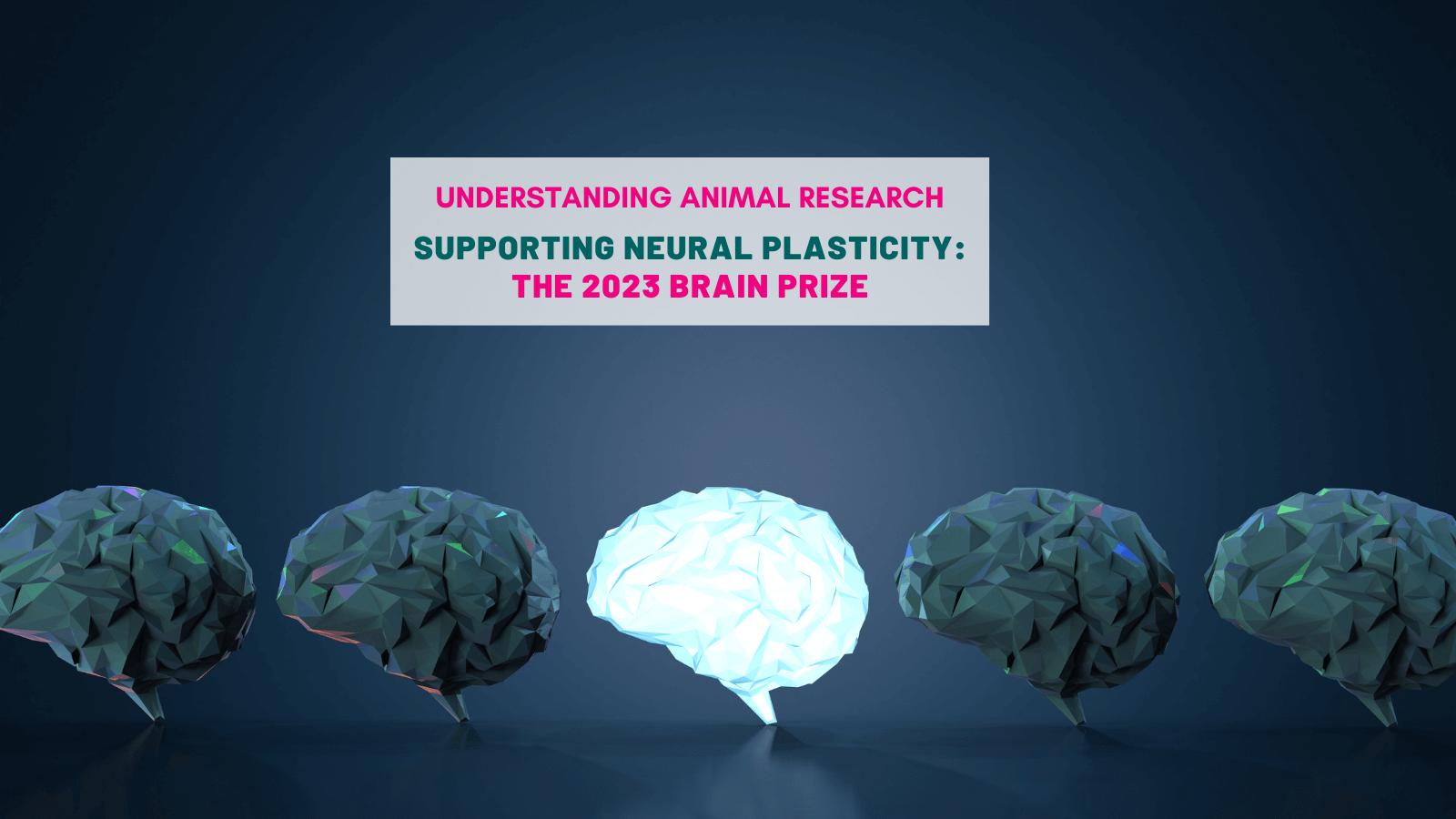The brain isn’t static. It never stops maturing, reorganising and changing to support learning, memory, adaptation to new situations and recovery from injury. Neural plasticity is a fundamental ongoing process that makes us who we are. In order to support development and adaptation to new challenges, brain circuits are constantly being remodelled and new patterns of connectivity made. This process requires the timely and precise synthesis of neural proteins, collectively called the neural proteome.
Michael Greenberg, Christine Holt, and Erin Schuman were awarded the 2023 Brain Prize for their ground-breaking discoveries showing how the synthesis of new proteins is triggered in different parts of the neuron to support cerebral plasticity. Each have revealed the fundamental principles of how this is mediated at the molecular level working in various animal models, including mice, frogs, zebrafish, flies and worms.
In the 1960s, a theory was developed around the idea that memory is supported by the production of molecules in the brain. Enhanced neuronal activity would be supported by the production of RNA and proteins. This theory was tested through a series of experiments, notably in animals. However, a number of critical questions arose from this molecular theory of memory. Are proteins synthesized solely to maintain memory? If so, are they produced rapidly enough to support brain plasticity and memory formation? Can these proteins maintain subsequent changes in neuronal connections? Many of the answers we have to these key questions we owe to the winners of the 2023 Brain Prize.
Michael Greenberg – the rapid production of proteins to support change
Studying the genetic changes that occur in response to external stimulation of a cell,
Michael Greenberg notably showed in 1984 that the production of proteins in mammalian cells could be stimulated within minutes. His work was paramount in showing that rapid changes in transcription produce sufficient alterations in neuronal RNA expression to sustain changes in synaptic function. The idea that gene expression changes could be induced on such a rapid timescale was a paradigm shift that ushered in a new era for neuroscience.
In subsequent decades, the cellular effectors identified by Greenberg have been shown to be essential for many aspects of brain function, from formation of context-dependent memories after exposure to a fearful or rewarding stimulus, to the developmental plasticity of the visual system in response to sensory input. By identifying the key markers of neuronal activity, his work also spurred the development of a critical suite of molecular tools that remain essential for modern neuroscience research.
Michael Greenberg’s seminal discoveries of activity-dependent gene transcription have revealed how nature and nurture cooperate to dynamically sculpt specific aspects of neuronal connectivity, shaping whole mammalian brain development and plasticity. Beyond this, several of the genetic regulators identified by Greenberg as markers of previous experience are now known to be risk factors for neuropsychiatric and neurodevelopmental disorders, most notably Rett Syndrome.
Erin Schuman – maintaining new connections in the brain
Once the idea that proteins could be produced fast enough to support neuronal changes was settled, another key question arose. Given the energy expense, could these changes be maintained in time ? This puzzle stimulated Erin Schuman and Christine Holt to examine the possibility that critical changes in synapse formation and function were persistently maintained by local changes in RNA translation.
In 1996, Erin Schuman performed the first experiments showing that proteins made locally in neuronal extensions called dendrites is required for maintaining long term neuronal connections. This crucial evidence provided the long-awaited answer to whether protein synthesis was a biochemical mechanism for supporting long-lasting changes at individual synapses. It proved that local protein synthesis bolters changes in synaptic strength needed for cognitive plasticity. Schuman’s work has since shown that local protein synthesis is a pervasive and necessary participant in the regulation of synaptic function throughout the brain.
Together, her work over the past few decades has provided a comprehensive and impressive amount of information about the way that local protein synthesis supports plasticity in the brain. Erin Schuman showed that neurons localise cell biological machines important for the production of proteins right where they are needed, within dendrites and axons, beside connection sites. Furthermore, her lab elucidated how gene expression can be regulated in the minute subcellular space of the synapse and how decentralisation of cell biological machines allows the single neuron to manage the production of proteins in a vast volume.
These transformative discoveries have expanded and solidified the field of local translation as a key mediator of synaptic function. Through her investigations of mRNA translation in neuronal connection activity, she created a number of cell biological toolsto label, purify, identify and visualize newly synthesized proteins in neurons and other cells that are still widely used today by neuroscientists to probe mechanisms of synaptic function. Her work is also increasingly relevant for the understanding of neurodevelopmental disorders such as Fragile X Syndrome and Tuberous Sclerosis.
Christine Holt – guiding new connections in the brain
At the same time that Schuman was performing foundational work on local protein synthesis in synaptic function, Christine Holt was performing foundational work on the mechanisms that guide synapse formation.
Holt’s work focused on understanding how neuronal extensions called axons are guided over long distances to eventually form the correct connections in Xenopus. She discovered the local remodelling and the key cell adhesion molecules that guide the growing tips to their appropriate targets during the development of the visual system in Xenopus tadpoles .
Her subsequent work provided a better understanding of how neural connections are first established. She further delivered rich and detailed analyses of the mechanisms that control axon guidance, growth and maintenance. She defined a critical role for the local synthesis and degradation of proteins in the development and maintenance of synaptic connections in particular. This ability to make new proteins on-site and on-demand in the most remote cellular compartments of neurons, provides adaptability and resilience.
Understanding the brain
The findings from the three 2023 Brain Prize winners have provided spectacular new insights into the cellular and molecular mechanisms that guide growing axons during brain development, and that enable the developing and adult brain to be shaped by experience.
“For me, this is the culmination of a forty-year odyssey aimed at understanding how our sensory experiences impinge on the neuronal genome to orchestrate brain maturation and the plasticity that underlies long-term memory, and how these processes go awry in disorders of the nervous system, “ said Michael Greenberg, now Professor of Neurobiology at Harvard Medical School
What is clear from their work is that RNA transcription and translation to facilitate protein production is the medium used by neurons to maintain a persistently altered state, a fundamental process for allowing previous experience to direct future action. The mechanistic insights generated from this understanding continue to generate new avenues of investigation and illuminate aspects of learning critical for understanding brain development and function. Theirs is also a beautiful discovery story in fundamental neuroscience that further provided clues to the aetiology of neurodevelopmental and neurodegenerative diseases of the brain.
More information : https://lundbeckfonden.com/files/media/document/The%20Brain%20Prize%202023%20Information%20Pack.pdf
Last edited: 25 April 2023 14:28




